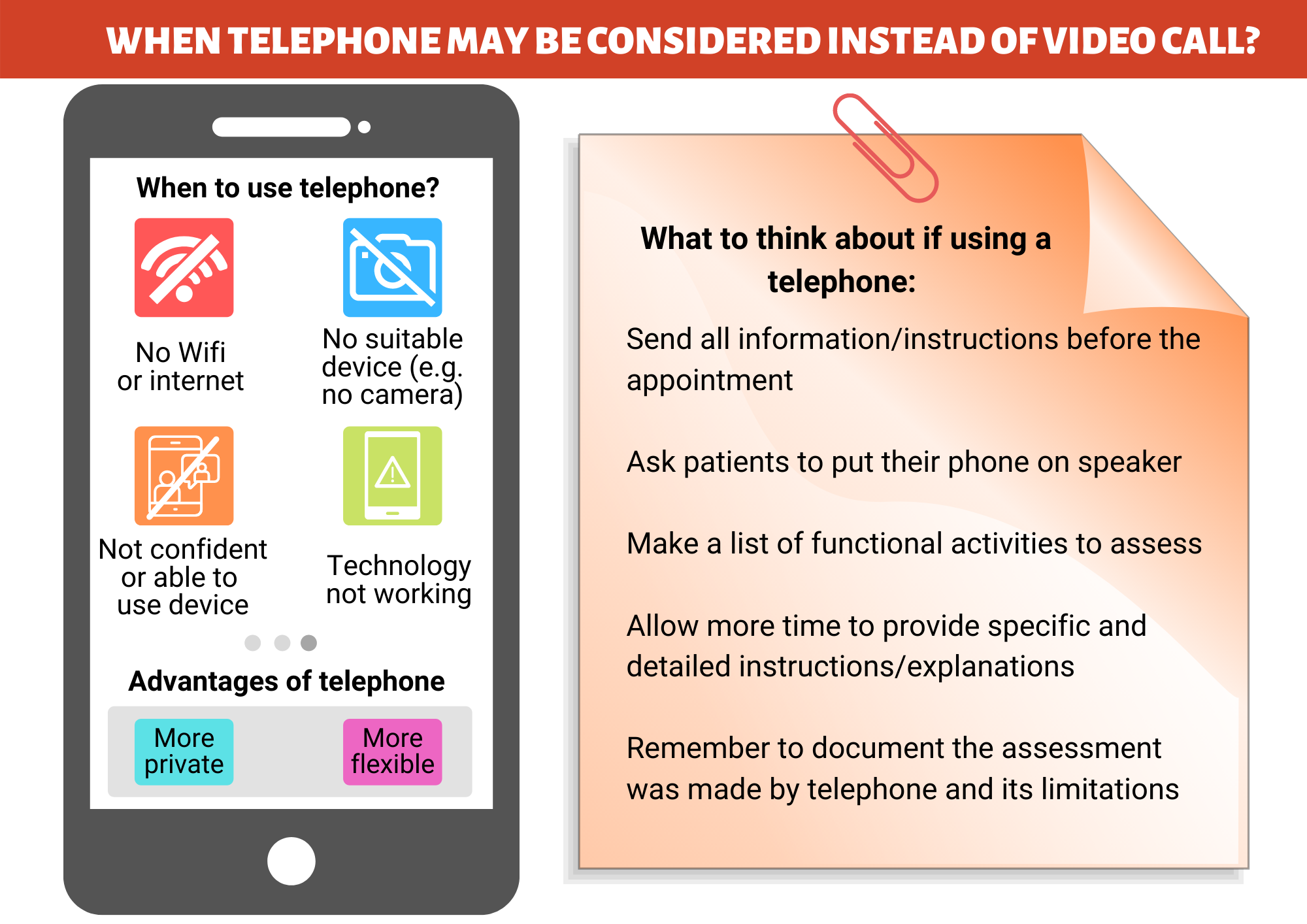There may be situations where a consult using a telephone is necessary or preferred. How can you make sure that it is as effective as possible? When should you consider using a telephone instead of a videoconferencing?
Telephone vs. Videoconferencing
Below we have created an infographic of when you may consider using a telephone for a physiotherapy telehealth session.

Considerations when using telephone for telehealth
Some things to consider if using a telephone:
-
- Ideally have the patient use a telephone with a speaker function so they can have their hands free when doing self-reported objective assessment.
- Warn the patient if your number going to show as a private or a withheld number. Ensure your patient has settings activated on their phone which allows them to accept calls from a private number.
- Suggest the patient has a list of medications or bottles of medication available to read out.
- Consider sending information beforehand with pictures of various movements/actions and descriptions so the patient can match to what you are requesting them to do. Be aware that they may not be doing exactly what you are requesting at all times.
- Consider functional activities to assess and develop a list beforehand. Think about how you could give your patient an idea of their range of motion e.g. knee flexion in sitting on a chair, if you bend your knee, is your heel back further than the back of your knee? If so, assume more than 90 degrees knee flexion.
- Consider the need to be more specific and detailed with instructions/explanations than would otherwise be required in a video call or face to face e.g. with a face-to-face sit to stand exercise or assessment, you can see if the patient uses their hands to help or not and you can determine a rough height of chair. Over the telephone you will need to ask about the height of chair, whether they are using their hands, are their feet touching the floor, are their knees higher than their hips etc.
- Allow more time for telephone appointments, it takes longer to explain/understand and requires more questions for the objective component of your assessment.
- Document clearly that the assessment was done by telephone and the limitations of this e.g. can’t see body part, self-reported range of motion/movements.
